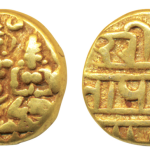- Baudhayan:
- In the first millennium BCE, he wrote the Sulva-Sutra, which includes various trigonometric formulas, including the one for determining the area of a triangle (later known as the Pythagoras theorem), the value of pi, and the square root of two.
- Aryabhatta:
- In his ‘Aryabhatiyam’ (5th century CE) book, he outlined the formula for computing square and cubic roots using the decimal number system.
- He demonstrated that zero was not simply a number but also a symbol and a concept.
- He provided an almost exact value for pi.
- He said that the moon and planets shine because of reflected sunlight, and he provided a scientific justification for solar and lunar eclipses.
- He also demonstrated that “Earth is round and rotates on its own axis.”
- Brahmagupta:
- Brahmgupta used place values in his multiplication techniques in a remarkably similar manner to what we do now.
- In mathematics, he introduced negative numbers and zero operations.
- He wrote Brahma Sputa Siddhanta, which introduced the Indian mathematical theory to the Arabs.
- Bhaskaracharya:
- He created the Chakrawat Method, also known as the Cyclic Method, to solve algebraic problems in his book “Siddhanta Shiromani.” Six hundred years later, European mathematicians rediscovered this technique and gave it the name “inverse cycle”.

